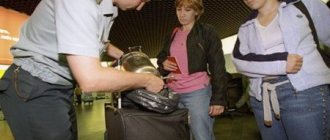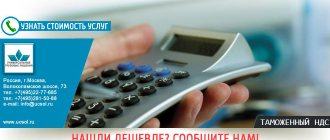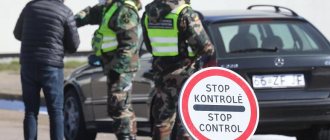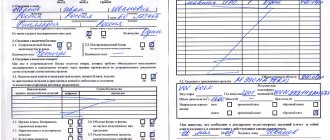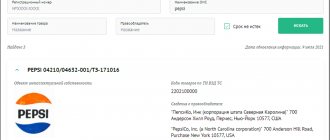April 22, 2021 Lada.Online 256 739 37
On February 1, 2021, a new version of government decree No. 413 on the rules for making changes to the design of vehicles came into force in Russia. The new rules affected not only car tuning, but also ordinary things like towbars, roof racks, LPG, etc. The magazine "Za Rulem" gave an explanation of the new rules with the lawyer of the Inconsult Bar Association, Mikhail Tarasov. The Lada.Online website clarified how the new rules will affect the installation of original LADA accessories.
What changed?
This is not about a ban, but about the need to register all changes in the design of the car in a new way
. Without laboratory approval and registration, all changes will be considered illegal.
- On February 1, new standards for making changes to the design of cars and other vehicles came into effect.
- From July 1, 2021, the examination and testing methods prescribed in GOST 33670–2015 will become legal.
Thus, until July 1, 2021, there are no methods to determine the safety of the changes made. This means that the regulatory and supervisory authorities do not have a regulatory and methodological basis until July 1
to make a decision on refusal to issue a permit to register changes to the design of vehicles.
What tuning and modifications are illegal?
Anything in the List of faults and conditions under which the operation of vehicles is prohibited is considered illegal.
Fines for violating these requirements range from 500-800 rubles. In case of repeated violation, the fine is 5,000 rubles and possible deprivation of a driver’s license for a period of 1–3 months. If the defects identified by the inspector are not corrected within 10 days, the registration of the vehicle is terminated.
OTTS: detailed information
Similar documentation is issued to distributors and manufacturers for new single vehicles (or batches thereof) for a period of 1-3 years. In this case, imported cars must be imported into the customs territory of the Customs Union strictly during the period of validity of this permit. Customs authorities require approval for vehicles intended for internal use, representative purposes and further issuance of certificates.
OTTS is compiled for almost all categories of vehicles that are intended for use on public roads.
You can begin the approval process if you have certain documents:
- Certificate of implementation of a quality management system in production;
- Certificate proving the assignment of the international vehicle manufacturer code WMI;
- Certificates of conformity regarding the safety of basic and additional equipment of vehicles (for domestic cars);
- And other documents, the list of which you can easily check with experts.
What tuning and modifications can be installed
Everything that is considered a component of the car will have to be tested and registered. This:
- suspension and any of its components
- steering and steering wheel
- driver and passenger seats
- external light optics, including license plate illumination
- bumpers
- exhaust system and its components, except for decorative nozzles on the pipes
- xenon lamps
- halogen incandescent lamps of non-standard light
- any spoilers
- non-standard thresholds
- custom wheel arches
- wheel arch liners
- additional external lighting
- roof rack
- wheel spacers
- gas equipment
- "kenguryatniki"
- lightboxes on the roof
- monitors for broadcasting advertising
- "fins"
- towbars
- winches
- engine tuning (chip tuning, boring and other modifications)
- wheel rims (must correspond to the sizes declared by the car manufacturer specifically for this model)
The legality of vehicle design changes from July 1 will be assessed in accordance with GOST 33670–2015 .
Explanations on individual tuning elements
Explanations from Za Rulem on individual modifications/tuning:
About wheel size
: Information about what wheel size can be used is contained in the owner's manual and documents issued during vehicle certification before sales in the country - VTTS (Vehicle Type Approval) and VSKTS (Vehicle Safety Design Certificate). More detailed explanations.
About the
roof
: The ban applies only to homemade roof racks. There will be no questions for owners of cars with factory-produced, mass-produced luggage racks certified by manufacturers. Moreover, this is a quick-detachable design, and not a car conversion.
About the trailer hitch (towbar)
: This is also a quick-release design. They are subject to certain requirements, but if the product is factory-made and certified, there should be no claims against the car owner. More detailed explanations.
About LED license plate lights
. Clause 3.4 prohibits the installation of lenses and lamps that do not correspond to the type of this lighting device. So, if the manufacturer has prescribed the use of, for example, W5W 12V 5W incandescent lamps in the backlight, others cannot be used.
About installing seats from another car
: Depends on what car and what seats. Such a replacement may be considered a conversion, but you are eligible if you provide documentation that the seats are safe and can be installed in your vehicle. The work must be performed in a specialized workshop (car service) and registered with the traffic police.
About the spare tire outside
: GOST 33670–2015 contains paragraph A.26.10, indicating that the spare wheel, batteries, and seats must be securely fastened in the places provided by the manufacturer.
About a non-standard muffler (spider, etc.)
: GOST 33670–2015 (clause A. 23.2) indicates that changes to the design of the exhaust gas system are not allowed. The maximum noise levels for the exhaust of vehicle engines are also regulated, and cars with “direct flow” are usually very loud.
About engine chip tuning
: There is still no direct ban on it. The main thing is that the electronic engine control units do not have visible damage and that the content of harmful emissions in the exhaust gases does not exceed the norm.
About mud flaps that don't come from the factory
: The list of faults prohibits operation if the vehicle does not have the rear protective device, mudguards and mud flaps provided for by the design. But if those that are not provided for are present, this is not a violation. At least not directly. It is unlikely that inspectors will bother with you on such a dubious matter.
About the non-standard radio and subwoofer (Teyes, etc.)
: It is possible, but not always (see explanations).
About a non-standard steering wheel (sports steering wheel, etc.)
: In the List of malfunctions and conditions under which the operation of vehicles is prohibited, the type of steering wheel is not regulated, in contrast to play, movement of components and parts, threaded connections, the presence or absence of power steering or steering dampers, and steering column fixation devices. The same as in GOST 33670–2015 “Single motor vehicles. Methods of examination and testing for conformity assessment." It states that the steering wheel should not catch part of the driver’s clothing or jewelry, the steering wheel mounting bolts to the hub should not protrude, you can use a steering wheel with metal spokes (rounded) - and that’s all.
However, the List contains clause 7.18, which states that operation may be prohibited if “changes are made to the design of the vehicle without permission from the State Road Safety Inspectorate of the Ministry of Internal Affairs of the Russian Federation or other bodies determined by the Government of the Russian Federation.” And this item is for traffic cops - for all occasions. However, they must still prove that you actually made changes to the design of the vehicle.
About installing HBO
: As before, the alteration will have to be registered with the traffic police (through examination by NAMI or other expert companies).
About wind deflectors (side deflectors)
: You can install it. But, according to GOST 33670–2015 (A.16.6), they must not be bent towards the body so that their edges cannot come into contact with a ball with a diameter of 100 mm (imagine a large Christmas tree ball), and have a radius of curvature of the edges of at least 1 mm. Difficult? This is not your problem, but the experts’, if they suddenly have to prove the illegality of your deflectors.
About body linings (fly swatter, etc.)
: There is no direct ban on the use of linings, deflectors and the like, however, in the List of faults and conditions under which the operation of vehicles is prohibited, there is that same universal clause 7.18 on making changes to the design. Did the inspector have any complaints? Invite him to explain where he sees design changes and show him a document that contains a ban on such accessories. In any case, before installing something non-standard on a car, you need to think a thousand times: is it really necessary, and check this “something” for absence of violations according to the List and GOST. You can certainly do without a “fly swatter”: there is no benefit from it, and its beauty is questionable.
Official clarifications from the traffic police:
Suspension lift
. Spacers for increasing ground clearance are components of a vehicle; their installation is possible provided that after making changes to the design of the vehicle, its safety meets the requirements of the technical regulations of the Customs Union “On the safety of wheeled vehicles.”
Towing device (towbar).
Components installed on vehicles, including the towbar, must comply with the requirements of technical regulations, including with regard to labeling. Installing a trailer hitch on a vehicle if the vehicle type approval states that “trailer towing is not intended” is an unacceptable modification to the vehicle design.
Winch and refrigeration and heating equipment.
Installation of winches and refrigeration and heating equipment is a change in the design of the vehicle. The possibility of this installation and the compliance of this equipment with other technical regulations are examined by an accredited testing laboratory in accordance with the current procedure for making changes to the design of the vehicle. To obtain a Vehicle Design Certificate of Safety Compliance (VSCC), the applicant must provide documentation demonstrating that the improved vehicle meets safety requirements.
Larger radius wheels.
When installing wheels of a size not specified by the manufacturer on a vehicle, the safety of the vehicle must be confirmed by a test report for stability, braking performance and speedometer readings. Tires installed on a vehicle must comply with the speed category specified in the Vehicle Type Approval.
Re-equipment for cargo transportation.
When making changes to the design of a vehicle related to the installation of dump and side bodies, tanks, awnings, it is necessary to provide documentation confirming the compliance of the vehicle with the changes made to the design of safety requirements.
Easily removable components.
Installation of easily removable components on a vehicle, such as a cargo compartment lid for a pickup truck, or a roof rack on a car, does not require obtaining an SSKTS if these components are easily removable, installed in accordance with the installation or operating instructions for the component, and the possibility of their use is reflected in the operational vehicle documentation.
Answer from the Main Directorate of the Ministry of Internal Affairs (more details):
Tuning body kit
. In order to legally drive a car with a tuning body kit, you need to obtain a decision on the possibility of making changes to the design of the vehicle from the traffic police. For re-registration to be successful, you need to have a declaration of conformity from the manufacturer of the tuning body kit.
What documents are needed to obtain OTTS?
To issue this certificate, the following documents are required (basic list):
- statement;
- general technical description of automotive equipment, declaration of conformity, list of marked components (car alarm, mirrors, lighting, belts, tires), drawings and diagrams;
- technical specifications and operating instructions;
- protocols of tests carried out, as well as descriptions of the technical plan for certain parameters (they are in the main and additional list of OTTS);
- a certificate stating that the manufacturer has been assigned an international WMI code;
- QMS certificate or data on the production conditions of vehicles.
For machines manufactured on the basis of assembly kits, a number of confirmations should be added to the above documents:
- origin of units supplied for assembly,
- availability at the assembly plant of all documentation necessary for high-quality assembly - design and technological.
- the absence of any design differences from the kits for which certificates have already been obtained.
In the case when a certificate is required to be obtained for special equipment based on wheeled chassis or other vehicles (the full list can be found in the traffic police), it is issued only if the base vehicle has one.
What is approved for installation according to OTTS
Vehicle type approval is a certificate confirming the vehicle’s compliance with certain requirements of TRTS 018/2011, which sets standards for all wheeled vehicles in the EAEU countries.
The OTTS number is indicated in the title of your car:
photo lanc06
You can find OTTS on the gost.ru website using the search form. To search, simply enter the first five characters of the VIN number, followed by an asterisk (XTAGF*).
The most important information is at the end of the document, where the permitted tires and vehicle equipment are indicated:
Procedure for obtaining OTTS
The registration/approval of a vehicle type approval certificate occurs in a certain order:
- An application of a certain form is submitted to the certification body, to which a package of documents is attached (their list can be found in the technical regulations of the Customs Union 018/2011, Appendix No. 12).
- Making a decision by the certification body on the submitted application. The decision period is no more than 15 days. If the decision is positive, a contract for certification work is signed with the applicant. It may also include inspections and tests necessary to obtain information about manufacturing conditions or evidence that is not sufficient to issue a certificate.
- Conducting certification tests of previously selected and identified automotive vehicles. They are carried out by an accredited testing center (laboratory), which is included in the Unified Register of Certification Bodies and Testing Laboratories (Centers) of the Customs Union.
- Analysis of the production of a manufacturer of motor vehicles. Performed by the certification body. Positive results of this study are an indispensable condition for obtaining OTTS. Issues that are taken into account in the process of production analysis, as well as the procedure and rules for its implementation, can be found in the technical regulations of the Customs Union 018/2011, Appendix No. 13.
- Registration of certificates of conformity and registration of declarations. It is carried out only in case of their absence and can be done either simultaneously with the issuance of the OTTS certificate (if the applicant submits an application for this) or separately.
- Preparation of a draft vehicle type approval certificate. Performed by the certification body based on the results of the studies described in paragraphs 3, 4, 5.
- Approval and registration of the certificate.
- Monitoring the compliance of vehicles with a OTTS certificate with the requirements of the technical regulations of the Customs Union 018/2011. Implemented by the certification body on the island of the certification agreement signed with the applicant.
Does this apply to original accessories?
The Lada.Online website contacted AVTOVAZ with the question “When installing original LADA accessories, will the owner have problems with the traffic police?” They answered us like this:
The installation of additional equipment, including accessories, on a car is a design change, since they are not included in the standard (standard) equipment of the car and are subject to registration with the traffic police.
Whether the accessory is original or not does not matter; it will still have to be registered with the traffic police. In the first case, this will be easier to do, because original accessories meet the high requirements of the brand and all safety standards.
However, the original accessory does not come with any certificates or similar documents confirming its originality. Therefore, how you will prove to the inspector that the original accessory is installed on your car is unknown.


